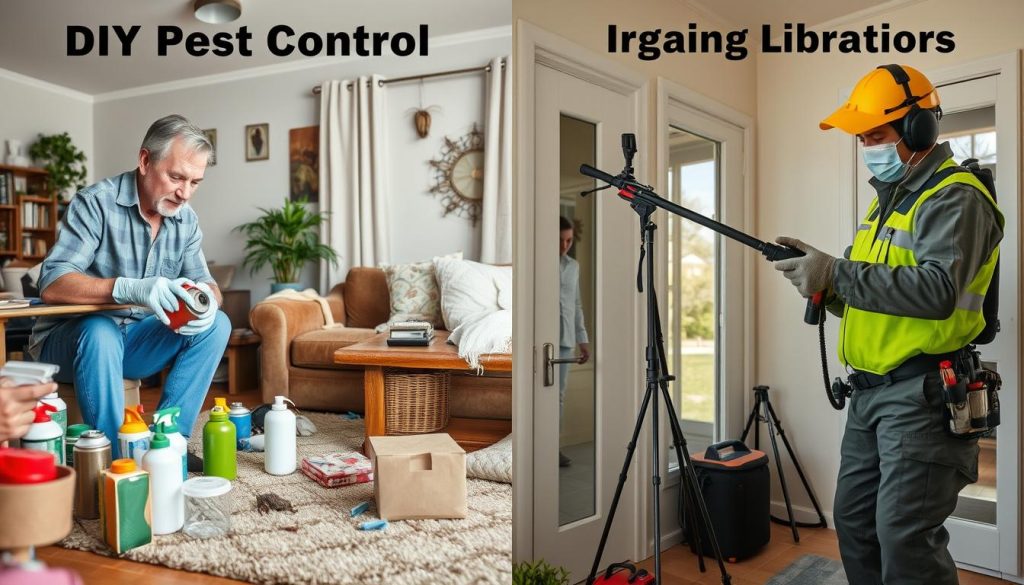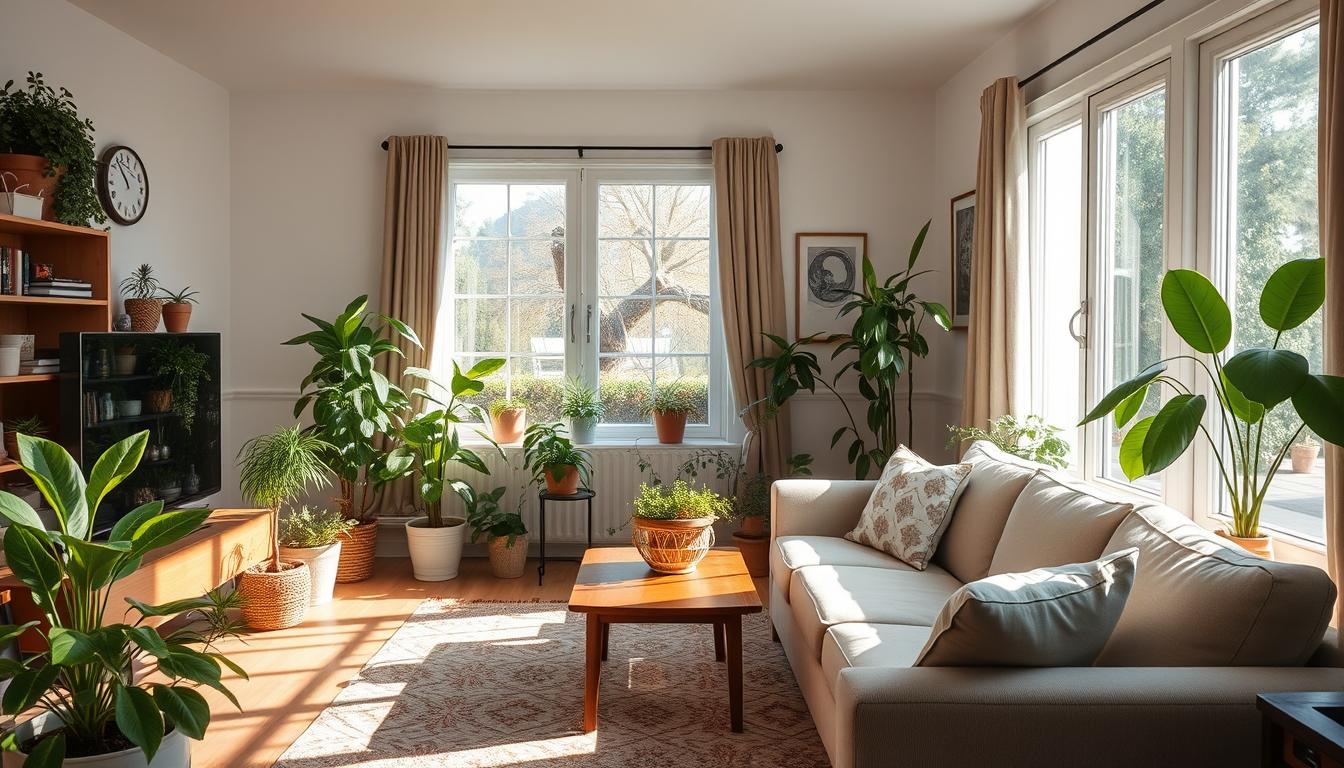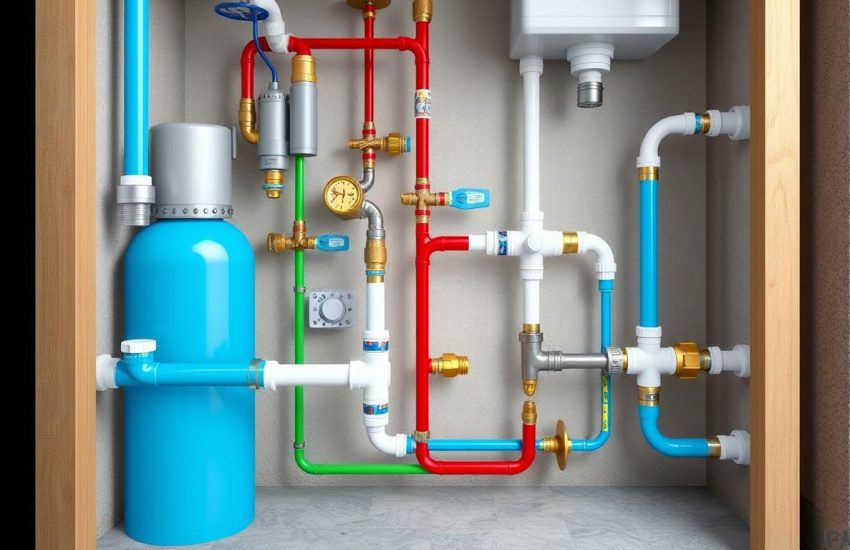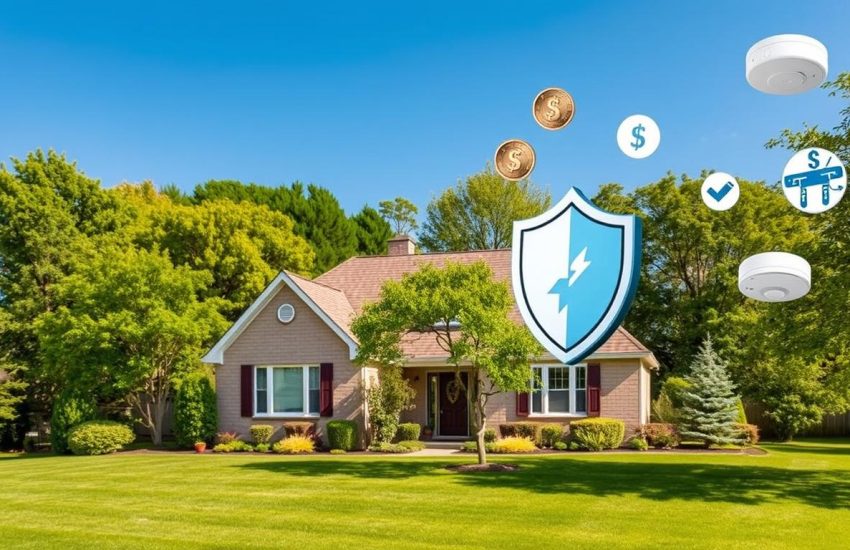Pest Control: A Complete Guide for Homeowners
Have you ever thought about what kinds of pests might be hiding in your home? Finding the best ways to keep a pest-free home matters for your health and happiness. But, how do you fight these unwanted guests without spending too much or using dangerous chemicals? It’s time to learn about smart pest control. This is a key part of home improvement that many people forget about.
Our guide helps you make your home a peaceful place. We teach you more than just spraying and trapping. Our tips include how to stop pests from entering and knowing when to call the experts. We cover everything. This includes how to keep ants and rodents away and how to maintain your home through the seasons. This keeps pests out for good. Let’s start learning how to protect your home from pests together.
Key Takeaways
- Understanding the importance of ongoing preventative measures in maintaining a pest-free home.
- How to distinguish between situations for DIY and when to call professionals.
- Affordable home care practices to avoid expensive pest problems.
- Yearly maintenance and checks help keep your home safe.
- Using less chemicals is better for a healthy home.
Why Focus on Pest Control?
Pest control is key not only because pests are annoying. It’s vital for reducing health risks, preventing big property damage, and maintaining ongoing pest maintenance. These efforts keep your family and home safe.
Rodents, cockroaches, and mosquitoes are harmful. They carry diseases and cause allergies. For example, cockroach allergens can lead to asthma in kids. In the US, 60% of homes have these allergens. Rodents chew wires, causing up to 25% of US fires with unknown reasons.
Here’s some important info about pests:
- Mosquitoes cause nearly a million deaths every year globally.
- Good pest maintenance stops big property damage and expensive fixes.
- Modern pest control methods ensure safety and follow the law.
| Aspect | Importance |
|---|---|
| Health Risks | They’re linked to diseases and allergies, showing why pest control is needed. |
| Property Damage | It leads to big money loss from damage and fire risks. |
| Pest Maintenance | It’s key for stopping pests from coming back, important for food areas. |
Integrated Pest Management (IPM) is important. It uses biological and eco-friendly ways. These methods control pests well while keeping our ecosystem safe. They avoid harm to non-target species and people.
So, pest control is not just about getting rid of pests. It’s about a complete plan that considers safety, effectiveness, and caring for the environment. This ensures a healthy and sustainable place for everyone.
DIY vs Professional Help
Choosing DIY or professional pest control can impact effect and cost. We’ll explore both to help you decide.

For small pest problems, DIY pest control methods are a first choice. You can use insecticides, traps, and natural products. They are immediate and save money. They let you learn about pests and control how you use treatments.
Benefits of DIY Pest Control:
- They save money and act fast.
- You understand and control usage.
But, DIY might not always work well for big problems. Lacking pro knowledge and safety risks are concerns.
Limitations of DIY Pest Control Include:
- Not knowing enough to get rid of pests fully.
- Using methods can be unsafe without the right safety steps.
Professional pest control services are done by experts. They know advanced ways and use special products. They’re trained in Integrated Pest Management (IPM) for safe and lasting pest removal.
| Aspect | DIY Pest Control | Professional Pest Control |
|---|---|---|
| Expertise | Limited | High, with specialized training |
| Safety | Potential risks | Regulated and safe |
| Cost | Less at first but may cost more over time. | More at first but better and lasts longer. |
| Effectiveness | Can vary; not so good for big issues. | Very good with solutions that fit. |
Sometimes a mix of DIY for easy stuff and pros for tough issues works best. This way, you stay ahead of pests but know when to get help.
Choosing DIY or pro depends on your pest problem, budget, and what safety and effect you want. Often, professional pest control services are a smart choice. They can save money on pest control in the long term by avoiding damage and re-treatments.
How to Save Money
Looking for affordable pest control means more than just finding services. It’s also about being smart with maintenance strategies. Here are simple, budget-friendly ways to manage pests. Everyone can use these tips to cut costs without losing quality.
Preventive Measures
- Seal entry points: A small investment in caulk can save you from future invasions.
- Regular home cleaning: Reduce pest attractants like crumbs and trash.
- Landscaping: Trim bushes and trees away from your home to eliminate pest bridges.
Timing Your Pest Control
Choosing the right time for upkeep is key. Early spring or late fall are good. That’s when pests are less active. This makes treatments more cost-effective.
DIY vs. Professional Help
DIY can work well for small issues. But big problems may need an expert. Try homemade repellents for small bugs. You can use things like dish soap and vinegar. This saves money and cuts down on professional visits.
For tough cases, like carpenter ants or clothes moths, getting help is smarter. They can really harm your home. Knowing when to call pros helps save money. Check out these cost-effective pest control tips.
Embrace Natural and Economic Options
Use natural products like Diatomaceous earth. It’s cheap ($25) and covers big areas. This method saves money and is kind to the planet. No need for lots of professional visits.
Subscription Services and Long-Term Plans
Long-term deals or subscriptions can save you cash. Companies often offer discounts for these. They provide regular service. This prevents big problems and costly emergencies.
| Method | Cost | Frequency Needed | Potential Savings |
|---|---|---|---|
| DIY repellents (Vinegar-based) | < $2 annually | As needed | $300+ vs. professional services |
| Diatomaceous Earth | $25 per bag | Seasonally | $325+ annually |
| Professional quarterly treatment | $99-$130 per visit | Quarterly | Negotiable per visit |
Negotiate and Compare
Always look at prices and services from a few providers. The highest price isn’t always best. Talking about prices can also bring them down. This is true for new customers or if you pick a long-term plan.
It doesn’t matter if you’re a DIY person or hiring pros. Putting prevention first, knowing when to act, and using cheap strategies will help save money on pest control.
Step-by-Step Upgrades
When thinking about home improvement, it’s smart to include pest-proofing. Pests like bugs and mice can sneak in during updates. Protecting your home early on cuts down on these risks. Here’s how to add pest-proofing to your project.

Start by looking at your home carefully before the work begins. Check for spots pests might enter, like vents and old pipes. Make sure these are sealed off. Keeping doors and windows shut helps too.
During the project, keep an eye out. Regular checks find problems early. Cleaning up mess and food keeps pests away. If pests seem like a bigger problem, call in experts.
After the updates, check everything again. Make sure all work areas are properly sealed. A pest control visit can confirm everything’s protected against pests.
| Pest Control Tips | Pre-Renovation | During Renovation | Post-Renovation |
|---|---|---|---|
| Entry Points | Seal ducts and unused pipes | Ensure doors/windows are closed | Verify seals and closures |
| Site Maintenance | Remove potential food sources | Regular site clean-up | Post-work deep cleaning |
| Professional Help | Possible initial assessment | Mid-renovation exterminator visit | Final verification treatment |
By following these steps, your home improvement project will not only look good. It will also be clean and free from pests. This means your investment into property maintenance and pest prevention really pays off.
Final Tips for Success
Keeping your home safe from pests is an ongoing task. It requires knowing how pests behave and their environment. This knowledge saves money and protects your home. It is important to know the common pests in your area and their active seasons. Talking to experienced exterminators can greatly improve your pest program.
Using integrated pest management (IPM) can increase crops by up to 40.9%. It also cuts down on chemical use by 30.7%. This leads to better farming and living spaces. You should regularly check for pests, keep detailed records, and adjust based on the weather. Success in pest management comes from being thorough and using the latest tools, like the scoutlabs pest trap.
Every home is different when it comes to dealing with pests. You need to know your home’s weak spots and the pests you’re dealing with. Keeping your home clean, sealing off entrances, and having good insects around are key steps. Pests cause about $70 billion in crop losses each year. Taking steps to protect against pests makes your home safer and helps the economy and environment. By keeping up with your efforts, your home stays pest-free. This gives you peace of mind now and in the future.



